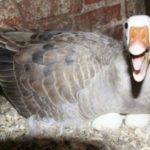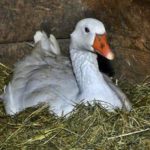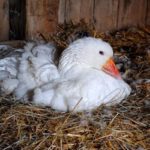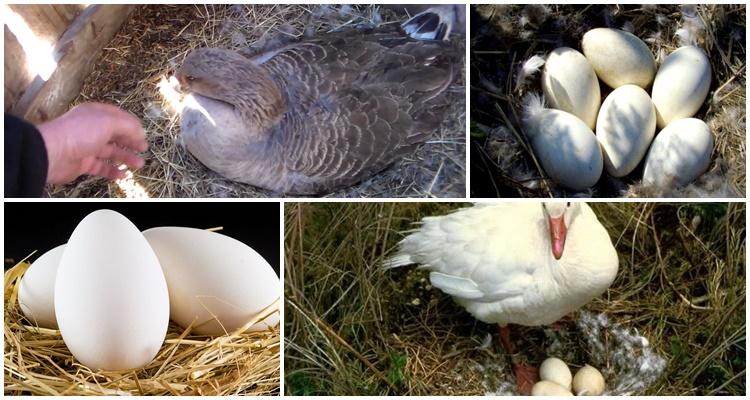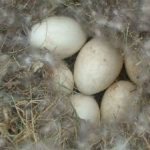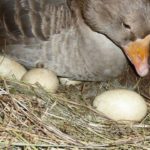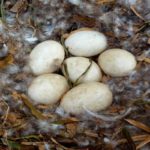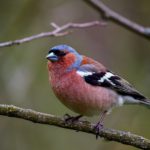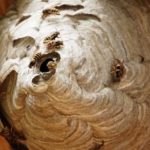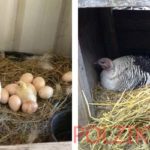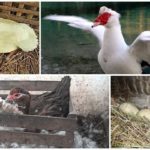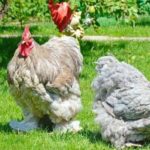The productivity of poultry depends on both the breed and the conditions of keeping. Farmers often have difficulties with breeding geese: how to place them on eggs, what food to give - these and other issues must be resolved before the onset of puberty. Some possible problems can be eliminated by purchasing an incubator. But this solution requires additional financial costs.
How to plant a goose on eggs
Farmers use two solutions to this problem: voluntary or forced planting.In this case, you need to consider when to start this procedure. Readiness for oviposition depends on:
- conditions of detention;
- age of the bird;
- time of year and other factors.
Generally, adult females begin laying eggs in late winter or early spring. However, if the house is not insulated enough, this process may begin closer to April. Certain signs indicate readiness for egg laying:
- trampling in one place;
- nest preparation;
- anxiety;
- tail drop.
During the laying period, it is important to maintain optimal conditions in the poultry house. In particular, the air temperature should be above +12 degrees.
Voluntary landing
In order for a goose to start hatching eggs on its own, it is necessary:
- install boxes or other structures that will be used as nests in shaded areas;
- line the bottom of the box with straw, feathers and bird down;
- eliminate foreign odors;
- ensure silence in the room;
- keep the poultry house dry.
The farmer's main problem is that it is impossible to force an adult bird to hatch eggs in a certain place. The goose must independently choose the appropriate box. It is also recommended to separate adults into different enclosures.
If the goose is not kept for breeding, then the eggs must be immediately removed from under the bird, replacing them with dummies. It should be taken into account that at this moment the bird will begin to hiss and protect its offspring.Moreover, if the adult female does not do this, the eggs should be removed and placed under another goose. A bird that does not protect its offspring is not suitable for hatching.
How to forcefully imprison?
For a forced landing, the following conditions must also be met. But if the bird refuses to raise its offspring, farmers create additional obstacles to prevent the bird from leaving the place. To force a goose to sit, you need to close the nest. To do this, a box or basket is often placed on top of the box with an adult bird. Usually three days are enough for a goose to activate the brooding instinct.
To start this process, you need to dim the lights during the day and turn them off completely at night. After three days, you can remove the box and check whether the brooding instinct has activated. If the bird does not leave the place, then the nest can be opened.
When forced landing, it is important:
- do not disturb the goose for 2-3 days;
- eliminate stressful situations;
- do not force feed or water;
- equip drinking bowls and places for eating in the immediate vicinity of the nest.
These conditions are also recommended to be observed in cases where the goose independently begins to hatch eggs. In addition, it is necessary to ensure that the bird does not leave the clutch for more than 20-30 minutes.
What kind of eggs are they laying?
It is recommended to remove recently laid eggs from under the bird. Instead of this material, dummies made of plaster or plastic are placed under the goose. You can also use previously laid eggs that are not suitable for breeding. You can do the same to activate the brooding instinct.
It is recommended to replace eggs when the bird leaves the nest to feed in the evening.Otherwise, the female refuses to incubate the offspring.
Hatching process
The hatching process is characterized by the following features:
- hens scoop up the entire masonry;
- birds periodically turn over eggs, moving those located on the edges to the center;
- During brooding, appetite decreases.
During hatching, it is recommended to immediately remove damaged eggs upon detection. This will help prevent the spread of infection. You should also spray the nest with water heated to 40 degrees from the 15th day, shortly before the goose returns.
What problems might you encounter?
As noted, the ability to incubate depends not only on the bird, but also on the characteristics of the environment. During the laying period (especially the first), farmers are advised to enter the poultry house less often so as not to cause stress to the goose. At the same time, it is necessary to eliminate sudden temperature changes and ensure a constant supply of food and water. Farmers are advised to create a daily routine. This will help minimize stress and discipline the females.

